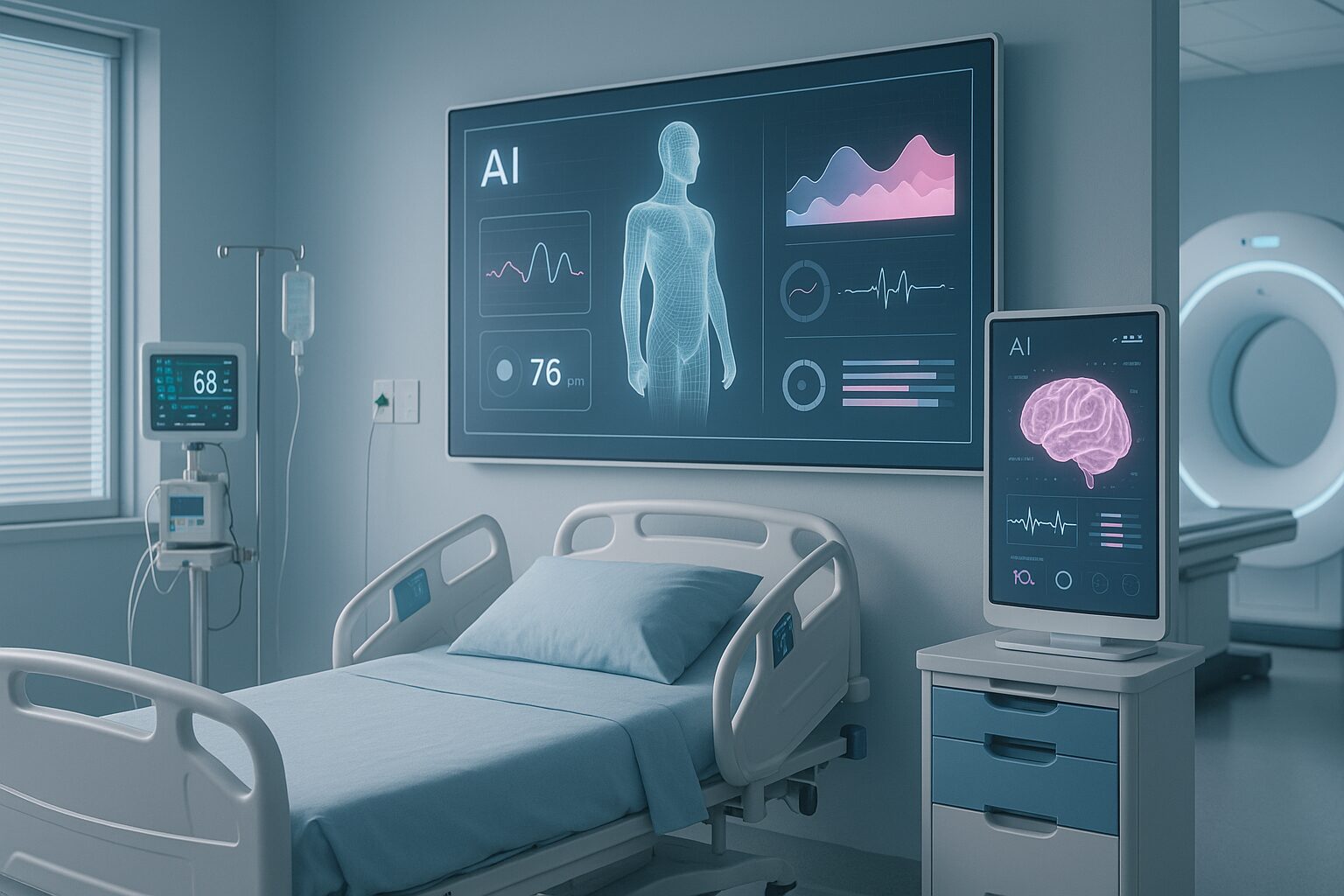The health care industry faces major challenges: rising costs, increasing demand for care, and a growing shortage of health care personnel.
AI can help make healthcare smarter, more efficient and personalized. But how do you deploy AI in practice? And what are we running into? We share concrete applications, challenges and insights from our collaboration with hospitals.
What can AI help with?
AI has a wide range of applications in healthcare. We’ll take you through some of the key areas where AI can make a difference.
1. Reduce administrative burden
Healthcare professionals spend much of their time on administration. Think of updating patient records and submitting claims. AI tools help make these tasks more efficient and reduce workloads. Some examples include:
- Transcribing and summarizing consultations using speech-to-text software and natural language processing (NLP)
- Answer patient questions faster by automatically preparing draft answers for caregivers using large language models (LLMs)
- Generating patient discharge letters using AI tools
2. Fast and accurate diagnostics
AI can help make diagnoses faster and more accurate. Smart algorithms can analyze medical images, and help recognize abnormalities that are difficult for the human eye to see. Consider:
- Recognize abnormalities in radiological images
- Improved diagnoses by combining AI analysis with physician knowledge
- Identify patients at high risk for complications
3. Smarter planning and logistics
More efficient processes = fewer wait times and better care. Practical examples include:
- Predicting no-shows
- Optimize OR planning by predicting duration of surgery
- Predicting peak hours in the emergency room
4. Personalized care
With AI, we can develop personalized care plans tailored to the unique characteristics of the patient. You can think of:
- Predict readmissions to take preventive measures
- Predicting outcomes of therapy to use this to support the choice of the appropriate treatment plan
- Real-time monitoring/prediction at hospital stay
The biggest challenges
AI offers opportunities, but implementation is not always simple. Here are the biggest obstacles.
Laws and regulations
AI as a medical device? If so, it must pass the Medical Device Regulation (MDR). The MDR is a European regulation that sets requirements for the safety and performance of medical devices. This can take years. For AI systems that assist in clinical decision-making, even 4 to 10 years, depending on the risk class. Fortunately, AI applications for supporting processes (such as no-show predictions or language models within the EHR) can be implemented more quickly. Laws and regulations ensure that AI is safe and effective, but can sometimes delay innovation.
Responsible and reliable (Responsible AI)
AI must be safe, transparent and effective. This is what we call Responsible AI. Validation of AI tools plays an important role in this; applications must be proven effective and safe. The validation process differs for each application, and each stakeholder, such as the patient or medical professional, finds different aspects important. A small pilot can sometimes be sufficient, but medically certified AI requires extensive studies and certification.
Implementation and adoption
AI only works when healthcare providers embrace it. Successfully implementing AI in healthcare facilities requires cultural changes in addition to technical changes. AI applications must integrate into existing ICT systems and (healthcare) processes. In addition, healthcare professionals must be trained and convinced of the added value of AI. Without change management and training, new technologies often remain unused. AI can support healthcare professionals in their work, but only if they understand how it works and can rely on it.
Scaling up: from pilot to wide application
A successful test is nice, but how do you ensure real impact? Scaling up is often difficult. And without large-scale application, the impact of AI for healthcare is limited. Differences between hospitals (ICT systems, data and processes) make this complex.
Applications such as language models within EHRs are relatively easy to scale up because they use existing data. But AI systems for clinical decision-making often run into additional barriers. Hospitals need sufficient capacity, expertise and resources to successfully and widely implement AI.
Conclusion
AI can make healthcare smarter and more efficient. But technology alone is not enough: collaboration between healthcare providers, policymakers and developers is crucial. The sooner we get started, the sooner we can future-proof healthcare.
Also getting started with AI in your (healthcare) organization?
At DSL, we like to think with you about concrete AI applications. Contact us and find out what we can do for you! Schedule a free introductory consultation here.
Sources:
Inspiration cases
View some of our healthcare case studies here:
- Instant access to contract information and policy conditions at the pharmacy counter by our virtual assistant
- Improved flow in the emergency room through our AI solution that predicts whether a patient needs to be admitted
- Secure and efficient implementation of Machine Learning models in healthcare
- Influence of classical risk factors in cardio metabolic diseases investigated
- Understanding data maturity as a foundation for future-proof healthcare innovation



